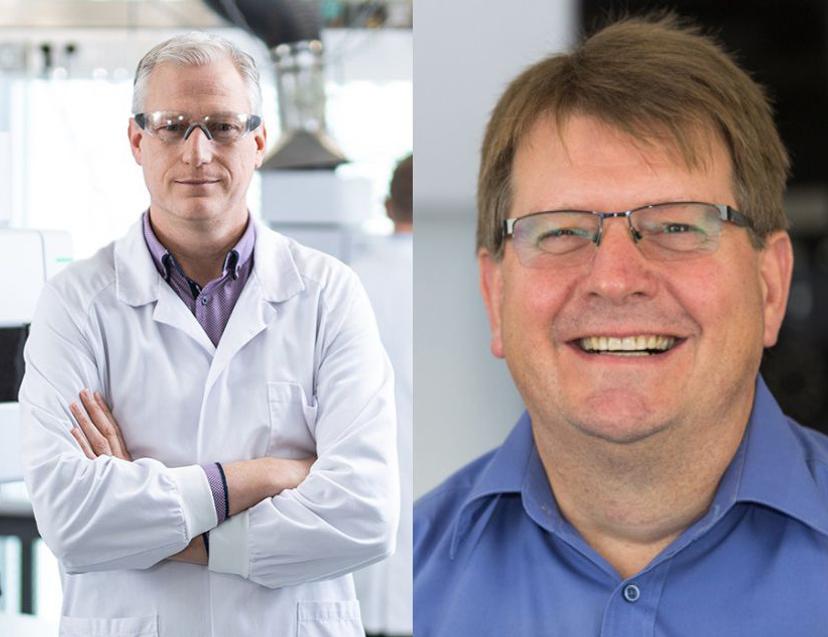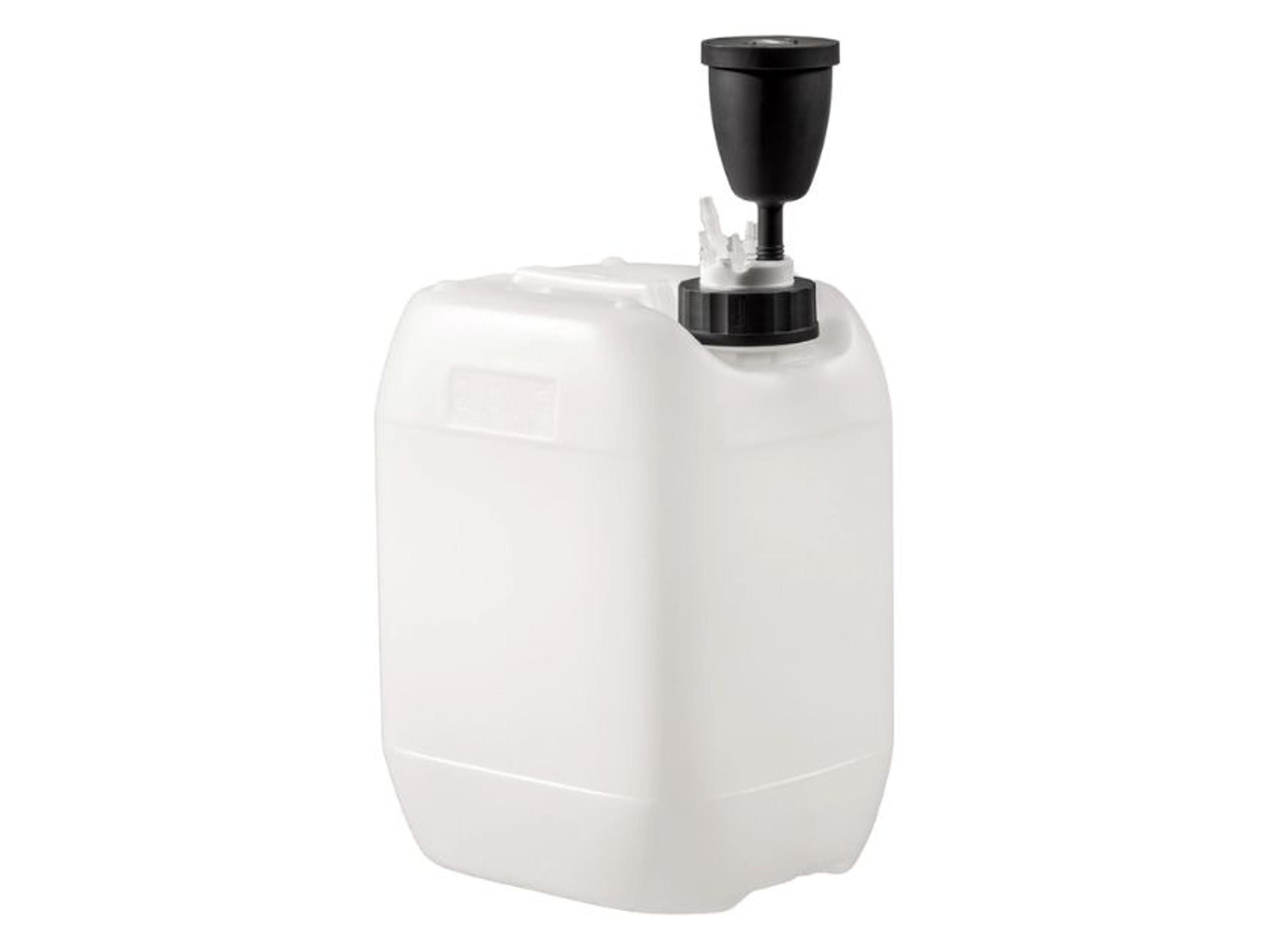Auto dilution system redefines sustainability in labs
Find out how Agilent Technologies' Advanced Dilution System 2 (ADS 2) enhances lab efficiency and accuracy, while significantly reducing environmental impacts by minimizing plastic waste and argon usage
17 Jul 2024
(Left) Andrew Ryan, Commercialization Manager at Agilent Technologies, and (Right) Eric Vanclay, Marketing Director for the Supplies Division at Agilent Technologies
As the world embraces sustainability, the scientific community is under increasing pressure to reduce environmental impacts, while maintaining research excellence. Agilent Technologies, a global leader in analytical instrumentation, is at the forefront of this transformation. With the introduction of the Advanced Dilution System 2 (ADS 2), Agilent is setting new standards for sustainable lab practices. This cutting-edge auto dilution accessory for inductively coupled plasma optical emission spectroscopy (ICP-OES) and inductively coupled plasma mass spectrometry (ICP-MS) instruments not only boosts lab efficiency, but also plays a crucial role in minimizing the environmental footprint of scientific research.
Hearing from Eric Vanclay, Marketing Director for the Supplies Division, and Andrew Ryan, Commercialization Manager at Agilent Technologies, we explore the ADS 2, and how Agilent is spearheading sustainability in the lab.
Innovation in laboratory sustainability
The ADS 2 exemplifies the commitment to enhancing laboratory efficiency and accuracy. This auto dilution system streamlines workflows by automating several labor-intensive and error-prone tasks, such as preparing calibration standards, diluting samples before analysis, and performing reactive dilutions for over-range samples, and QC solution failures. By automating these processes, the ADS 2 frees up valuable analyst time, reduces the risk of human error, and enhances sample throughput to ultimately improve overall efficiency and accuracy. This system also aligns with global efforts to reduce plastic waste – a significant environmental concern given the millions of metric tons of plastic waste generated by labs worldwide.
By automating dilutions, the ADS 2 not only improves efficiency, but also significantly reduces the use of plasticware and glassware.
Andrew Ryan Commercialization Manager at Agilent Technologies
The reduction of plastic use in laboratories is crucial for minimizing environmental pollution and resource depletion. Scientific labs generate substantial plastic waste, including pipette tips, tubes, gloves, and other single-use items. This waste often ends up in landfills or incinerators, contributing to global plastic pollution. By automating dilution processes, the ADS 2 reduces the reliance on these single-use plastics, directly addressing this environmental challenge.
Automation reduces plastic waste
Although the ADS 2 is a new product launched in April 2024, it has already undergone extensive beta testing in major contract testing service laboratories across Europe, North America, and Asia Pacific. Ryan highlights the environmental benefits observed during these tests, "by automating dilutions, the ADS 2 not only improves efficiency, but also significantly reduces the use of plasticware directly addressing the environmental impact of laboratory waste." By automating dilutions, the ADS 2 eliminates the need for additional sample tubes, gloves, and pipette tips to significantly reduce plastic waste.
The ADS 2's automation capabilities also extend to preparing calibration standards and handling remeasures, the tasks that are traditionally time-consuming and manual. This automation not only saves time, but also reduces the amount of argon and other utilities needed, thereby lowering costs and emissions. Ryan elaborates on the impact on daily workflows, “the ADS 2 will handle situations in real-time to avoid any rework, providing a full set of results from a single analysis and avoiding wasted time.”
The use of argon, a noble gas essential for plasma generation in ICP-OES and ICP-MS instruments, is another significant environmental and cost concern for laboratories. Producing and purifying argon is an energy-intensive process, and its widespread use in labs contributes to greenhouse gas emissions. By optimizing argon usage through automation, the ADS 2 helps labs reduce their environmental footprint and operational costs. Sustainable practices like these are integral to minimizing waste, improving efficiency, and promoting environmentally friendly operations.
Agilent's green initiative in lab automation
Agilent's sustainability efforts extend beyond product innovation. The company is dedicated to improving lab efficiency and safety, while reducing environmental impact. Vanclay explains, “sustainability has become a new driver for innovation at Agilent, as we strive to help our customers meet their sustainability and business goals simultaneously.” This vision is reflected in every aspect of the ADS 2, from its recycled packaging materials to the high recyclability of its components.
For instance, over 60% of the foam material used to transport the ADS 2 is made from recycled polyethylene, and almost three-quarters of the packaging can be recycled. When the ADS 2 reaches the end of its life, approximately 95% of its components can be recycled, with all injection-molded parts clearly labeled for easy identification. This focus on recyclability ensures that the ADS 2 supports a circular economy, reducing waste and promoting the reuse of materials.
Sustainability has become a new driver for innovation at Agilent, as we strive to help our customers meet their sustainability and business goals simultaneously.
Eric Vanclay Marketing Director, Supplies Division at Agilent Technologies
The ADS 2 also addresses the environmental impact of sample preparation processes. Laboratories often use significant amounts of plasticware for sample preparation and dilution. By automating these processes, the ADS 2 reduces the need for additional plasticware, minimizing waste and lowering costs. This automation also enhances laboratory safety by reducing the handling of dangerous chemicals by operators, further aligning with Agilent's commitment to sustainability and safety.
Streamlining environmental workflows
The ADS 2 supports the broader goal of promoting environmentally friendly operations in scientific research. It is designed to cater to various laboratory workflows, providing flexibility and efficiency. Ryan details the three common workflows in environmental contract labs:
1. Direct analysis: Samples are analyzed without further dilution, often leading to rework if samples fail analysis. The ADS 2 addresses this by automating real-time dilutions to avoid rework.
2. Screening and pre-dilution: Labs screen samples to determine necessary dilutions. The ADS 2 automates this process, saving analysts hours of manual labor each day.
3. Universal dilution: All samples are diluted multiple times to ensure valid results. The ADS 2 streamlines this by automating the dilutions, reducing the need for manual input and excess plasticware.
These enhancements not only improve productivity, but also extend beyond environmental considerations. Automating manual dilution processes means that laboratory analysts have more time to focus on critical tasks, such as data analysis and method development. This shift in focus not only enhances productivity but also improves the quality of scientific research. By providing reliable and consistent dilutions, the ADS2 ensures that analytical results are accurate and reproducible, supporting high-quality research outcomes.
In conclusion, Agilent's ADS 2 is a testament to the company’s dedication to innovation and sustainability. By automating dilution processes, it not only reduces plastic waste and enhances lab efficiency but also aligns with global efforts towards greener practices. Vanclay emphasizes, “we are incorporating sustainability considerations across product lifecycles and in our end-to-end solutions for lab workflows.” The ADS 2 is not just a product, it is part of Agilent's ongoing commitment to a cleaner, greener future for scientific research.


